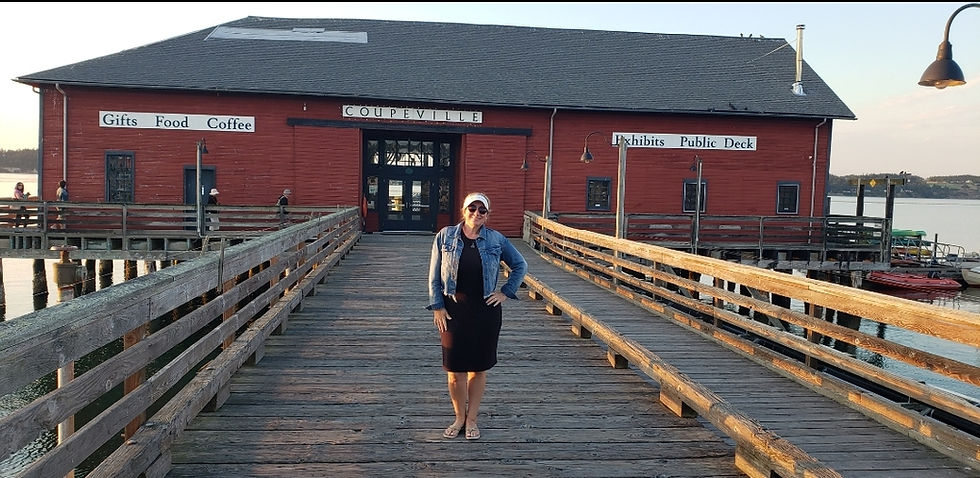Coupeville, Washington History
- Jacqui Sullivan
- Aug 23, 2022
- 2 min read
Mike and I found the cutest town while exploring the islands in NW Washington. Coupeville is a historic district within the federal Ebey's Landing National Historical Reserve. The reserve was established by Congress in 1978 as the first and only National Historical Reserve in the nation. Its 22 square miles encompasses farmlands, Fort Ebey State Park, Fort Casey State Park, shorelines and beaches, parks, trails, and 91 buildings and structures on the National Register of Historic Places.

Coupeville was once home to Lower Skagit tribes who built three permanent villages, the largest being bah-TSAHD-ah-lee (snake place). The protected harbor, Penn Cove, facing Saratoga Passage, offered abundant salmon, clams, mussels, flounder, and sole.

British Captain George Vancouver (1757-1798) made journal entries of his visit to the island in the summer of 1792. He named it in honor of Joseph Whidbey (1755-1833), master of the HMS Discovery, and Penn Cove in remembrance of a friend. The Native word for the island was Tscha-kole-chy. Vancouver met a small number of Skagits and wrote that their tribes had once flourished but had been decimated by disease. Following the Point Elliott Treaty in 1855, many of the Lower Skagit people were placed on the Tulalip reservation. A few continued to live in Coupeville.

On September 27, 1850, Congress passed the Oregon Donation Land Claim Act, granting 320 acres to single men, and 640 acres to married couples who had settled on the land before December 1 of that year.

Coupeville was then created in the 1850s by Captain Thomas Coupe, and named for him. Captain Coupe arrived on Puget Sound on the bark Success. Scouting the area, Coupe settled at Penn Cove in 1852. His wife, Maria, and their family joined him there in 1853 and Captain Coupe worked as a coastal trader, sailing both the Success and the Jeff Davis, the first revenue cutter on Puget Sound (part of the armed maritime law enforcement service). He also built and operated a number of small schooners as well as a steamer that he also named Success. The Coupes did not initially file for their property and settler C. H. Ivans claimed the same piece of land. On April 3, 1854 Coupe filed his claim and eventually paid Ivans to clear the title. It was not until September 1865 that Coupe was granted the property, the west half assigned to him and the east 160 acres to Maria.

The activation of Fort Casey in 1901 spurred efforts for Coupeville incorporation in April 1910. During the Great Depression, Whidbey Island utilized government funds for building projects such as Deception Pass Bridge (1935). Many of Coupeville's older structures survived into the 1970s and Whidbey Island support for the arts and tourism gave impetus to formation of a National Historic Preservation District and the Ebey's Landing National Historical Reserve, the first of its kind recognized in the U.S. Continued support of tourism has preserved four blockhouses, historic buildings, and homes, and most significant, the prairie itself. Gift shops, restaurants, businesses, and boutiques in heritage buildings now line Coupeville’s Front Street.




Comments